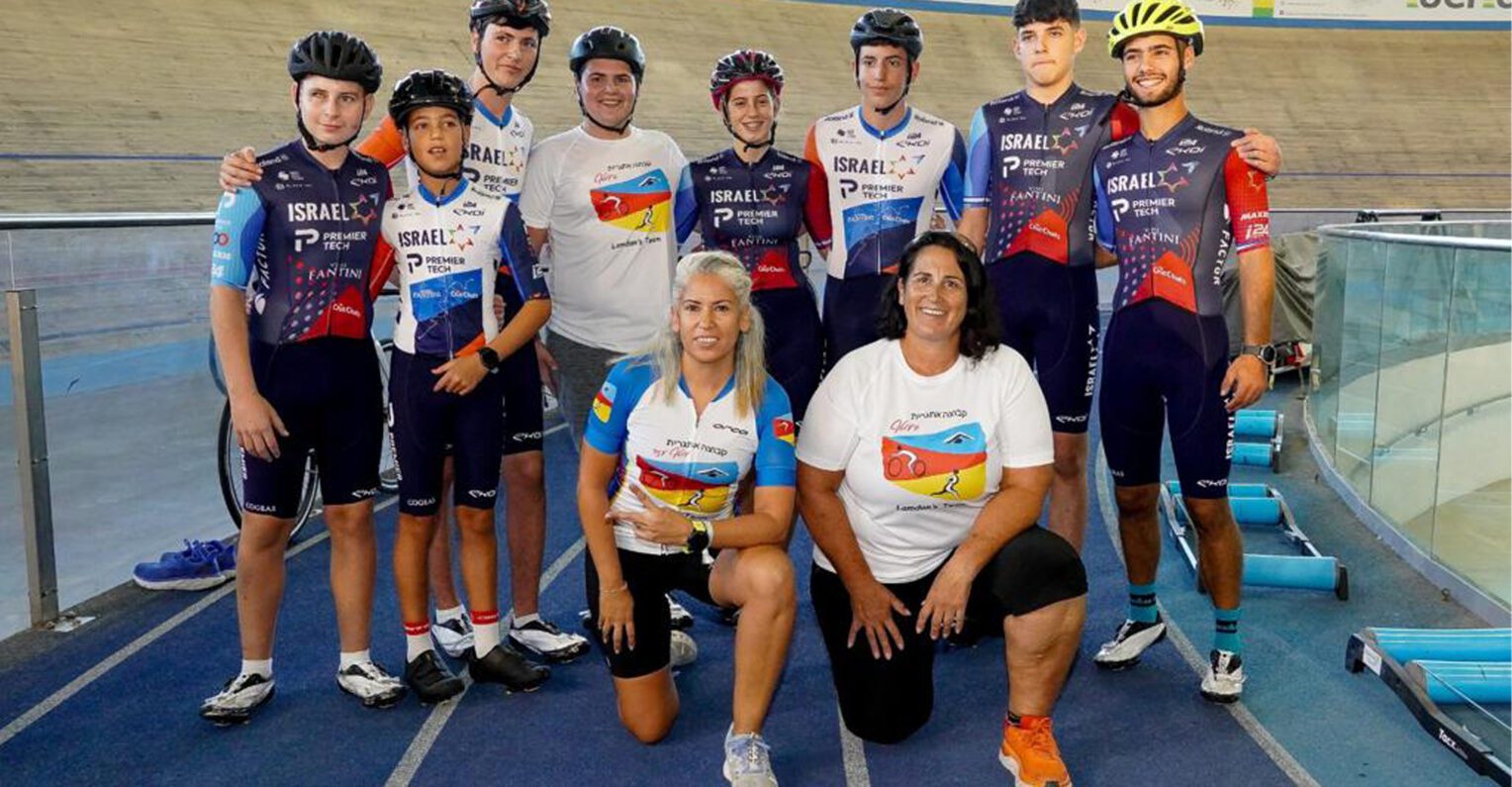It seemed like a routine play on the track of the Velodrome in Tel Aviv: young riders circling on their bikes along the inclined walls, lap after lap.
But the tears of emotion mixed with a bit of fear in the eyes of the mothers and fathers watching hinted at the immense emotional burden behind this scene. “I have a strong and optimistic child,” said Erez Cohen, pointing to his 15-year-old son Itai, who pedaled with surprising confidence considering this was his first time back on a bike just over five weeks after being injured and losing his eye in the Hamas ambush, and just two days after doctors removed a bullet fragment from his head. “It was great to get back to riding. I missed it,” said Itai, whose face still bears the marks of the shrapnel.
“To see ‘my kids’ back on bikes here in the Velodrome alongside Israel’s national team riders gives me real hope that we have begun the journey back to life. A kind of ‘restart’,” said Judith Bdolach, the veteran coach of the young riders from the western Negev club near Gaza (renamed to “Otef Israel” since 7 October). She gathered them together for the first time from all the communities across the country to which they had been evacuated. “They’re not themselves yet. It will take a lot to overcome the traumas that haunt them and all of us, but getting back on the bikes and especially the embrace and understanding that someone finally ‘sees’ them, ‘counts’ them, and stands behind them – this will give them the desire and motivation to return to the sport they so loved.”
The Cycling Federation and IPT gathered the Israeli cycling community at the National Velodrome in Tel Aviv for what seemed like a demonstration of “we’re still here” after the blow suffered on that dreadful day. Eight cyclists were killed on the morning of 7 October, others were injured, many hid for hours by the roadsides.
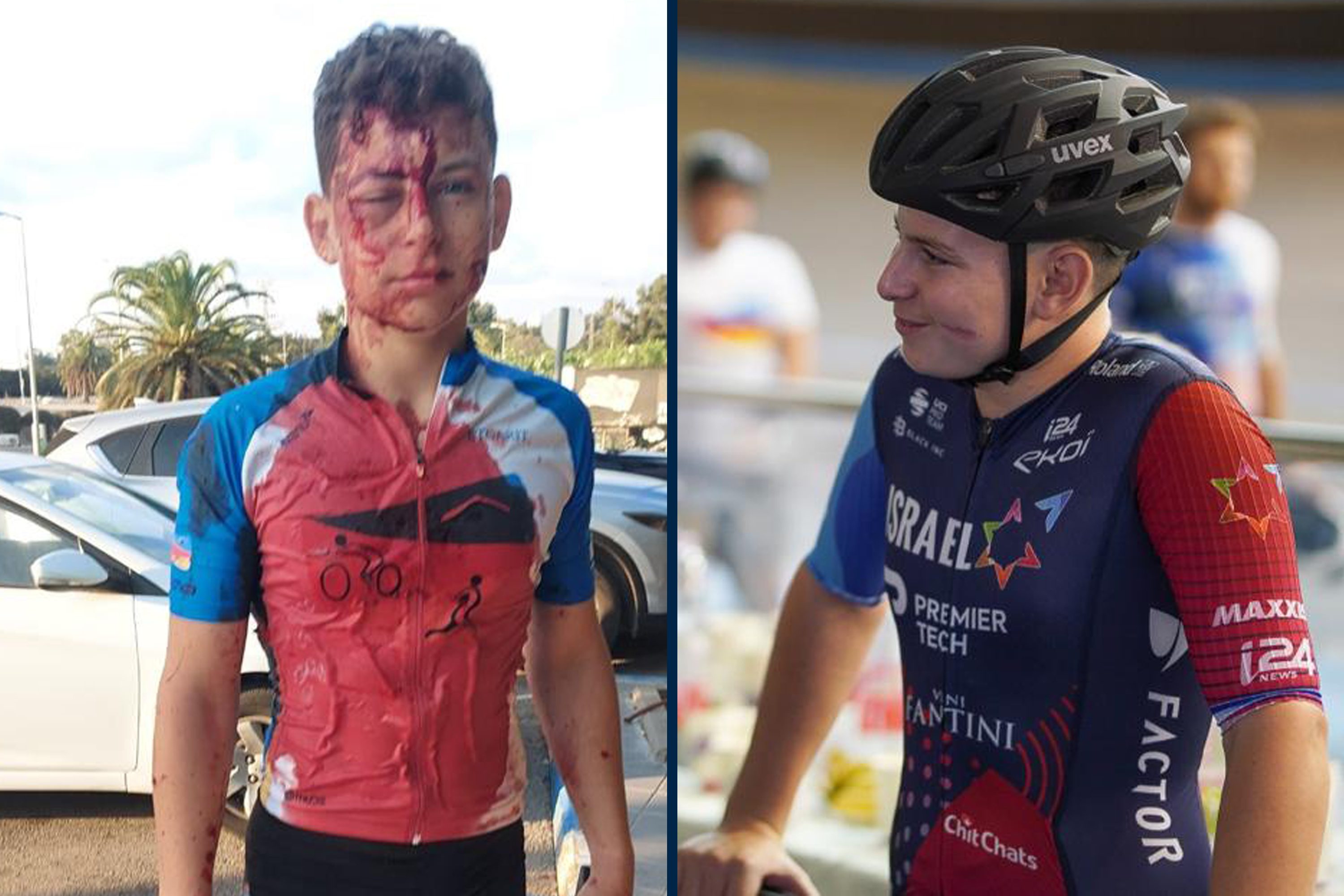
Photo: Teenage cyclist Itai after he was ambushed (left) and him back on his bike in Tel Aviv last night (right, picture by Yoav Lavi)
To this day, they haven’t fully processed what changed their lives forever. Judith remembers every second from the moment the missiles started falling around them, how she ordered her trainees to lie down by the road and covered them with her body, and how she commanded them “to ride at full speed to the nearest shelter in seconds that seemed like an eternity to me.” Two of her young riders, Itai and Zohar, aged 15, got into the escort car of Zohar’s dad, but soon found themselves in a hail of bullets from Hamas terrorists. All three were injured, but also saved thanks to the resourcefulness of young Zohar Shachar, who helped his injured father turn around and escape. Yesterday, Zohar amazed his father when he joined a training session at the Velodrome under the guidance of the National team coach, Niv Livner. The doctors didn’t really recommend it. The wound from the bullet that hit his shoulder hadn’t yet healed, but he insisted. “He was simply on cloud nine,” said the father Avi. “I realised that he really needed it.”
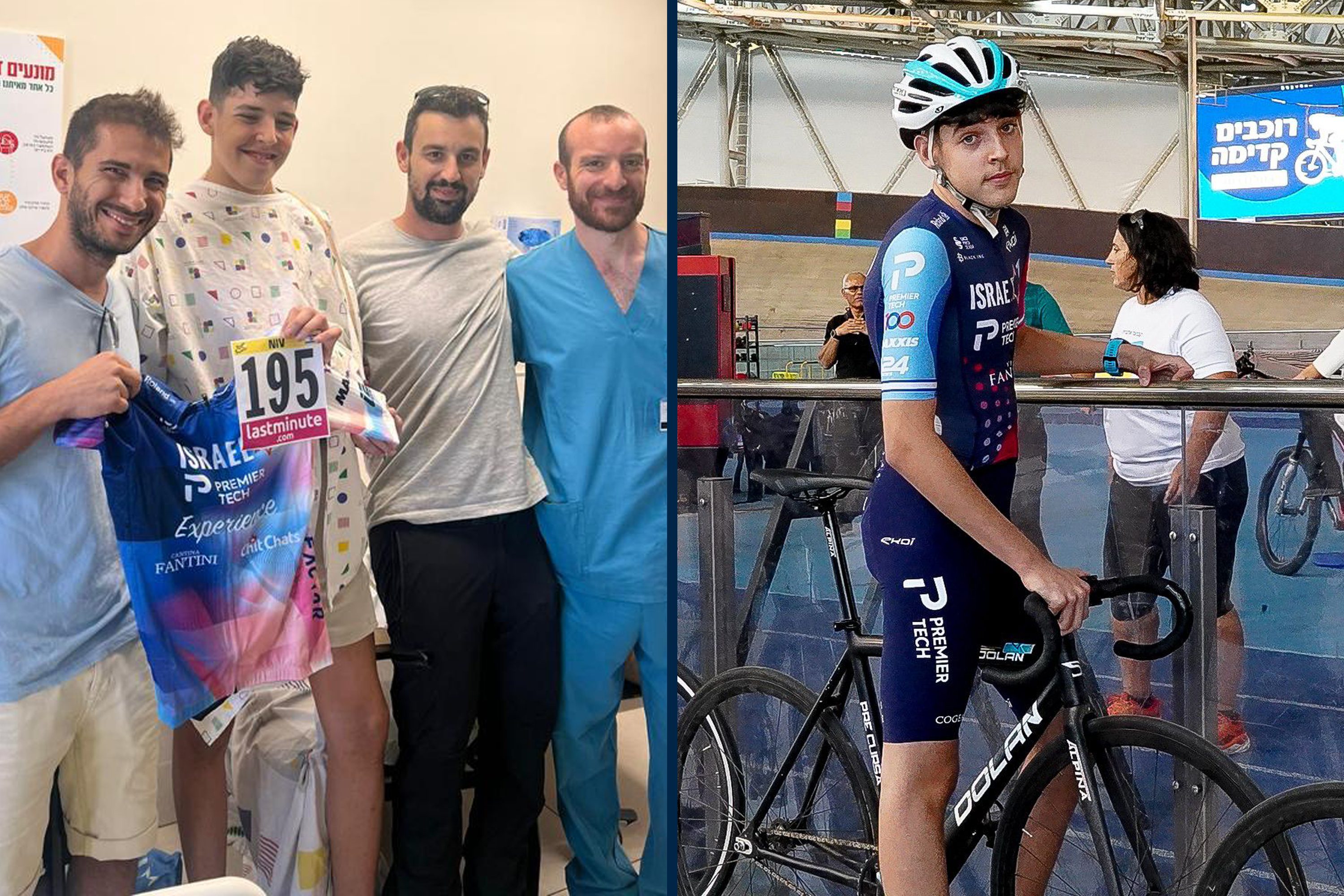
Photo: Teenage cyclist Zohar in hospital in the days after 7 October alongside former IPT rider Guy Niv (left) and him at the Velodrome last night (right, picture by Yoav Lavi)
Although the Israeli cycling community suffered a heavy blow, in many ways, it quickly understood its role in providing immediate therapy through cycling to its youngest generation. The Cycling Federation launched a project in collaboration with Team IPT, with many volunteers from the industry. Instructors, including some IPT riders, were sent with bicycles to dozens of communities to which the children from have been evacuated to.
Now, the Velodrome in Tel Aviv opens its gates for the next phase of the project – hosting the evacuated children for regular cycling activities. Yesterday, for the first time, dozens of children from Kibbutz Nir Am, who were evacuated to Tel Aviv and started learning in the city’s educational system, came to the Velodrome and enjoyed a few hours of pure joy on the bikes.
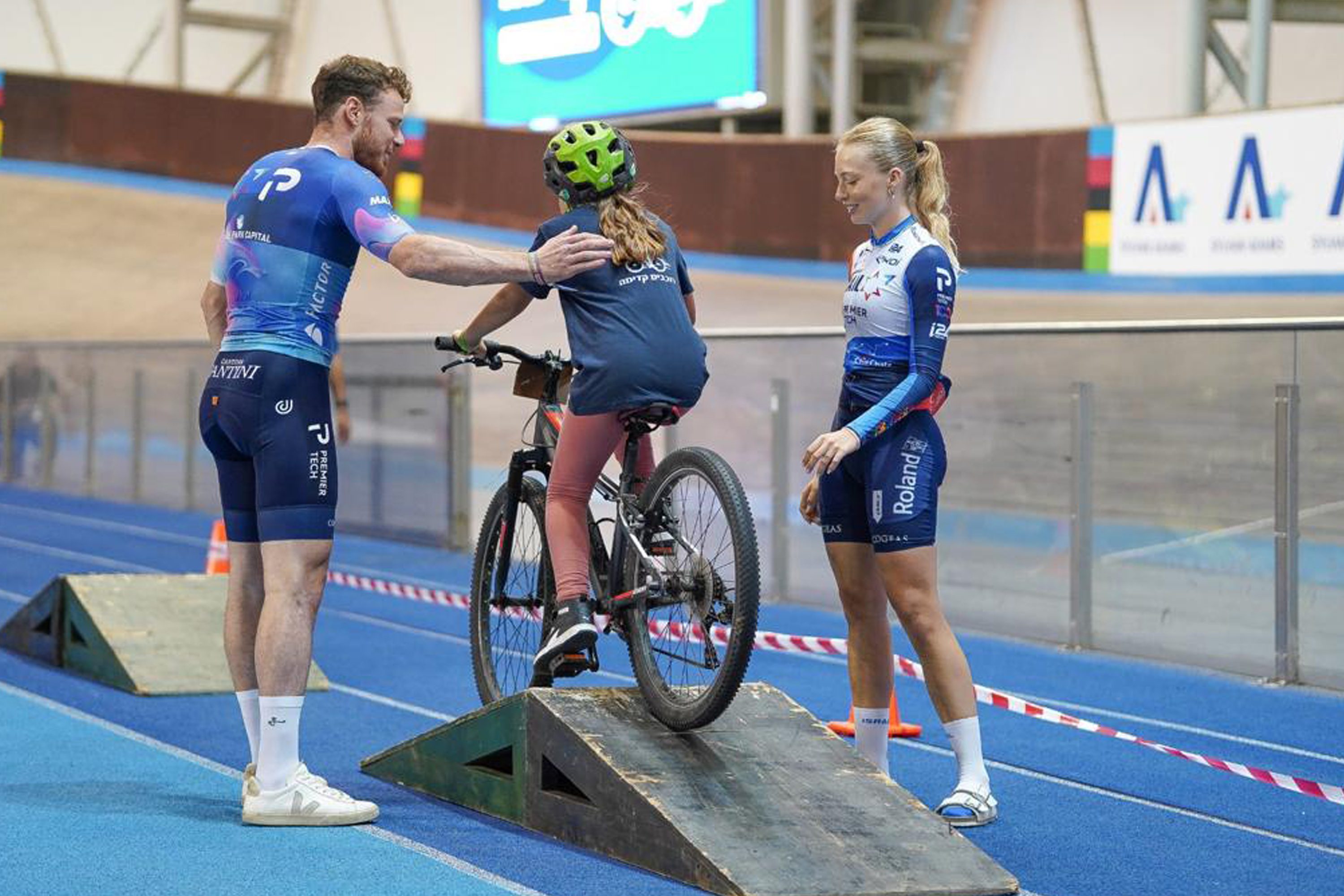
Photo: ICA riders Lahav Davidzon and Yasmin Keren helped young children ride again (picture by Yoav Lavi)
Daphne Lang, Chair of the Cycling Federation, and Roni Baron, the founder of the Israel-Premier Tech team, declared that the event was the first step in turning the Velodrome into an open home for the evacuated children and of course for the children who had been scattered all over the country, far from their homes. “The entire cycling community embraces you,” said Lang. “I want you to feel that the Velodrome will now be your home.”
Baron also announced on behalf of his partner in ownership of team IPT, Sylvan Adams (who has built the Velodrome together with the Tel Aviv municipality), that the team would continue to support the project and assist and accompany the group of riders from the Negev who yesterday rode with team IPT’s Giro d’Italia jerseys, given to them as a gift by the professional riders. “They are amazing boys with inspiring determination,” said Guy Niv, the first Israeli rider to finish the Tour de France. Niv visited Itai and Zohar in the hospital and yesterday met them on their first ride.
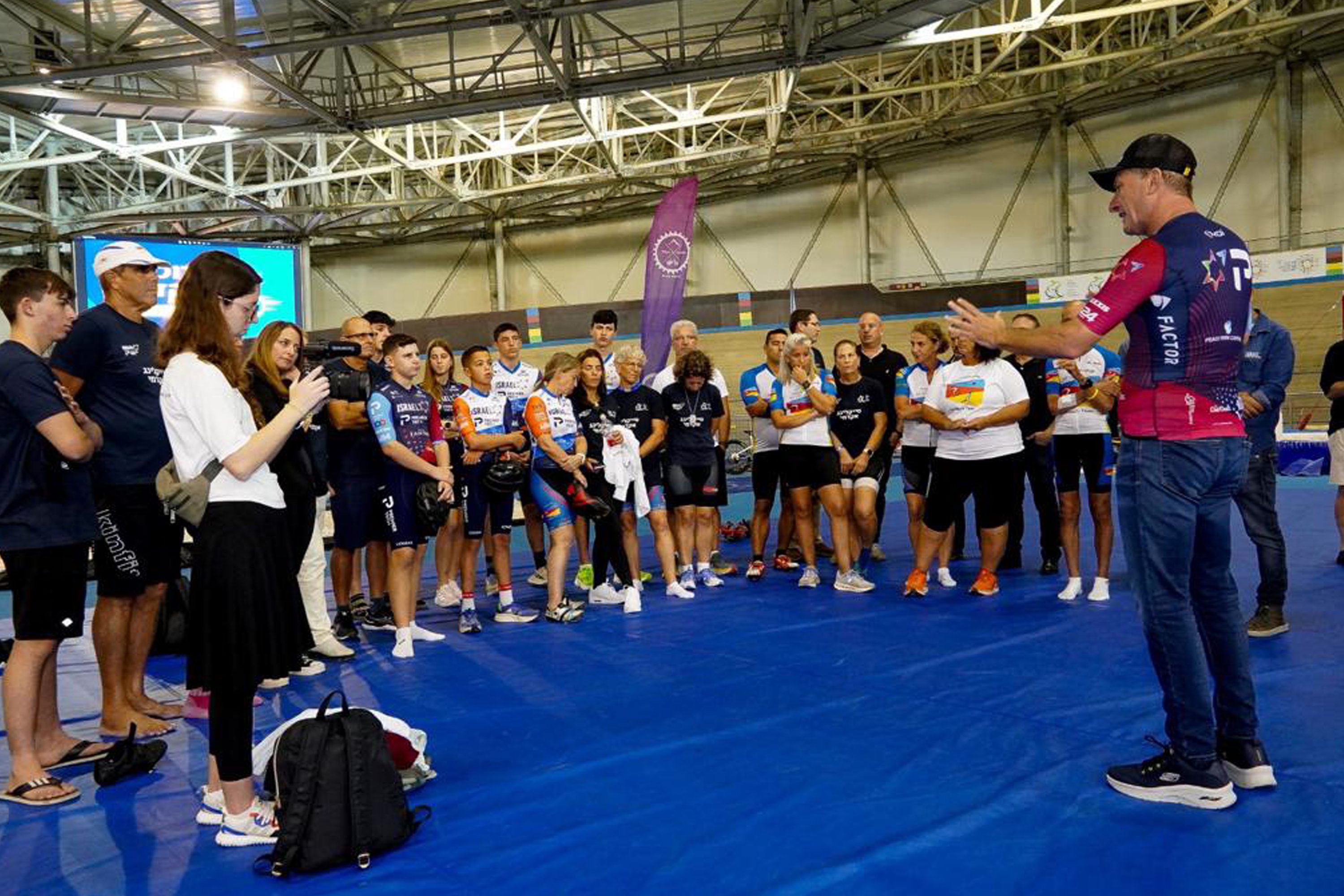
Photo: Ron Baron talking to the attendees (picture by Yoav Lavi)
At the end of the event, a ceremony was held to commemorate the eight riders who were killed on that black Saturday morning, including the team’s fan Tomer Shpirer, who was murdered in the ambush and later identified by the team’s jersey he wore on his last ride.
Etan Shpirer, Tomer’s widow and mother of their two children, asked to read the words she wrote for him: “My beloved Tomer. I take comfort in knowing that in your last moments, you were on your way to do what you loved most – cycling – which was an inseparable part of your life. Cycling was your secret lover, we used to laugh together. I hope that up there, they’ve arranged for you the best route from the sun to the moon and among all the stars.”

